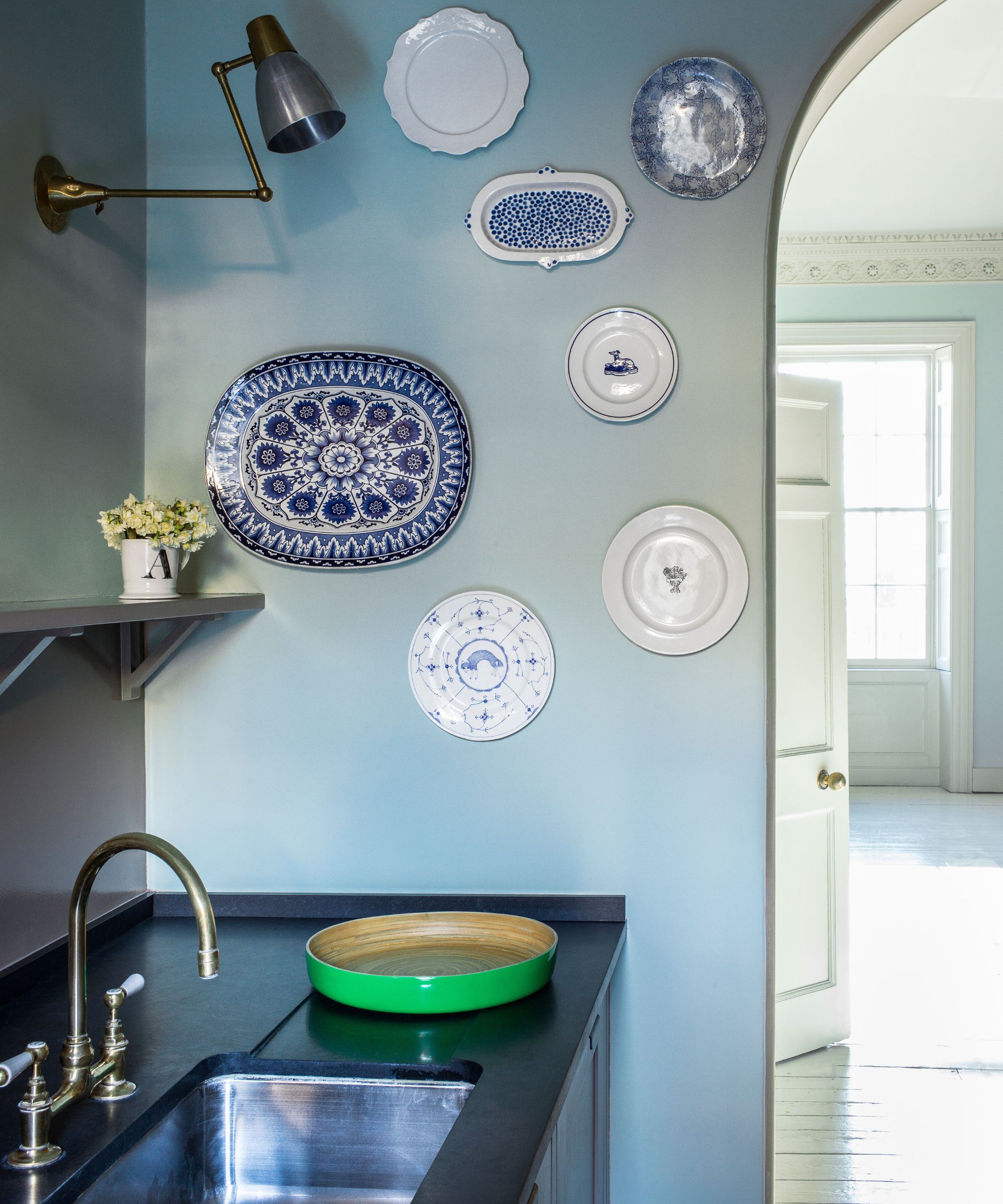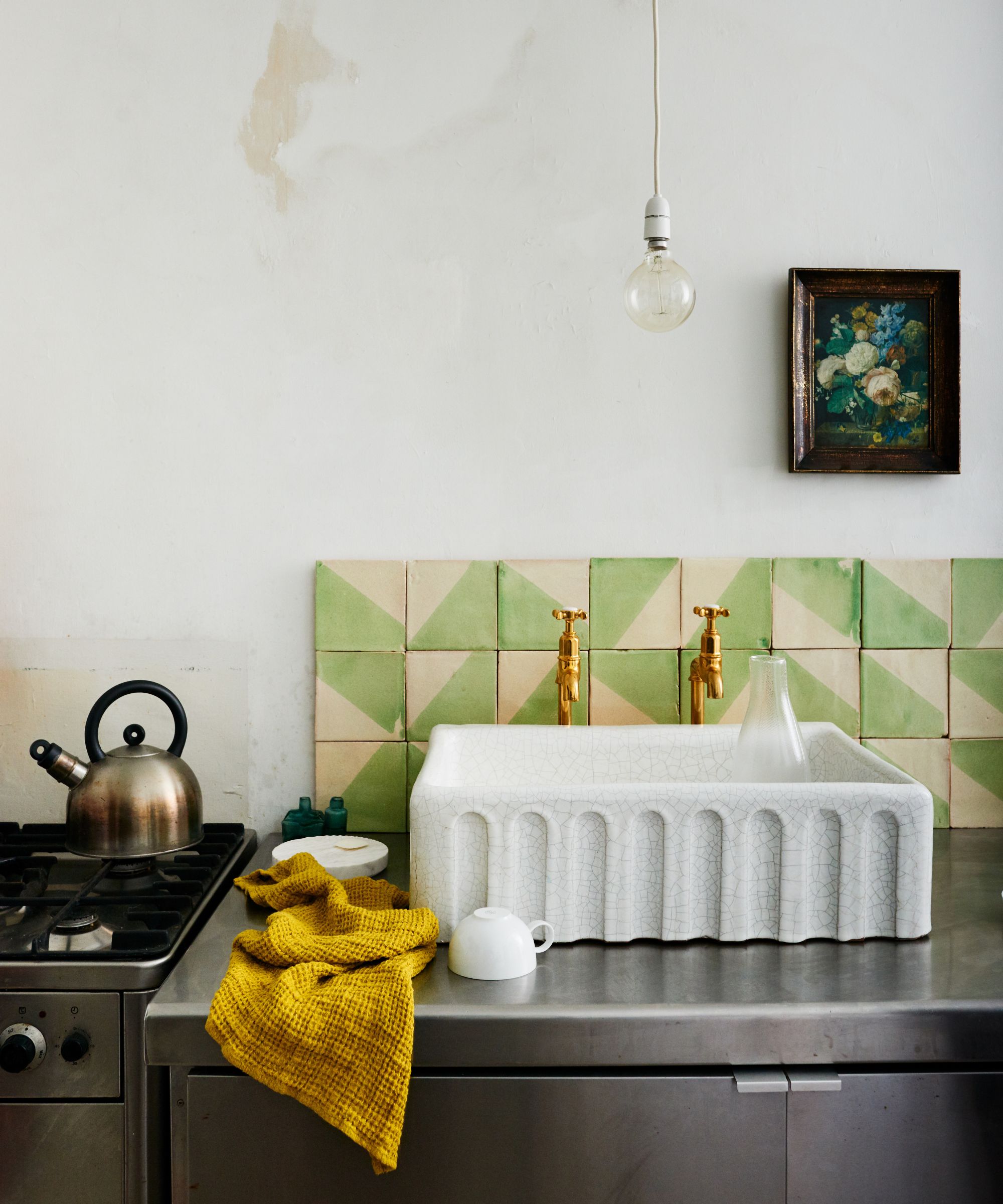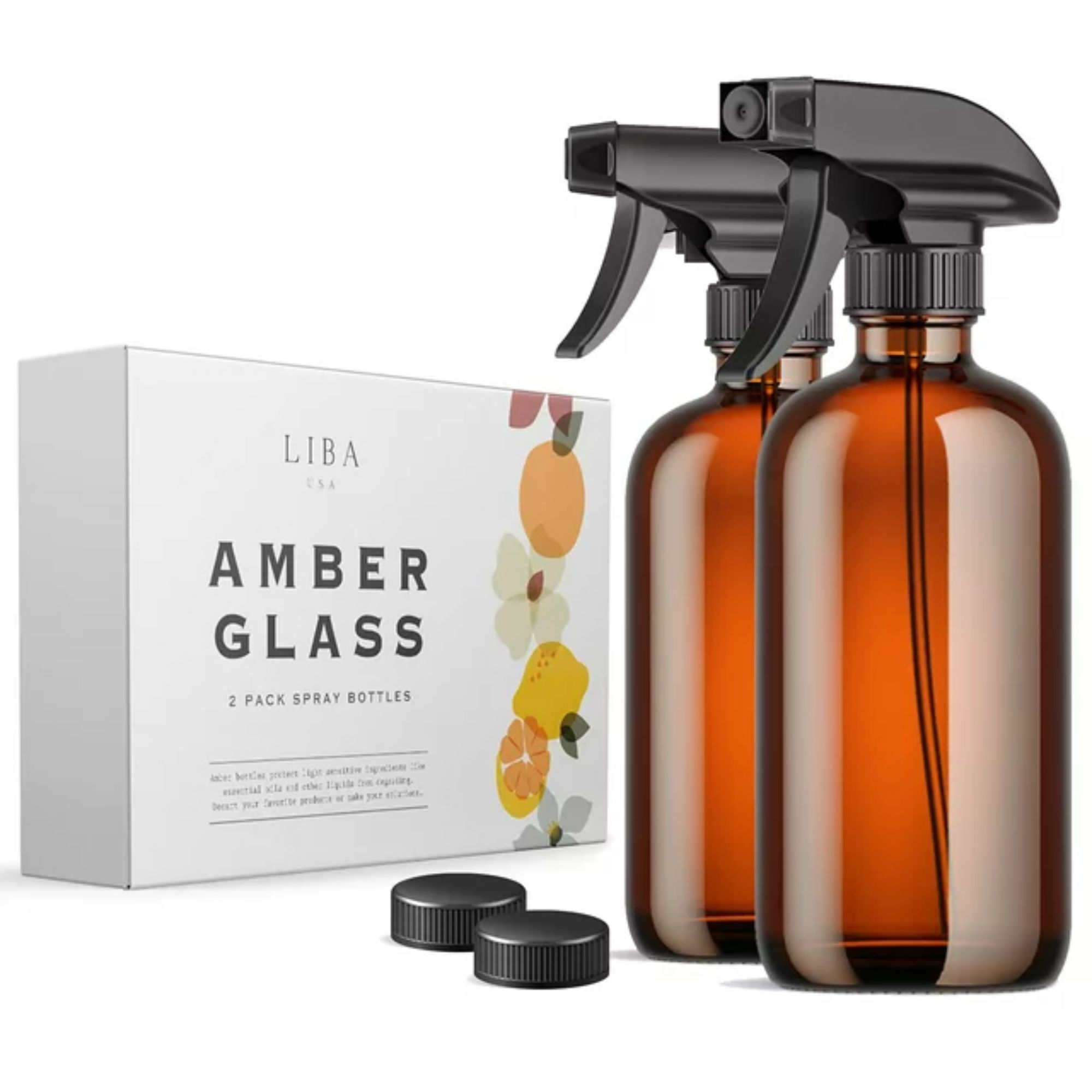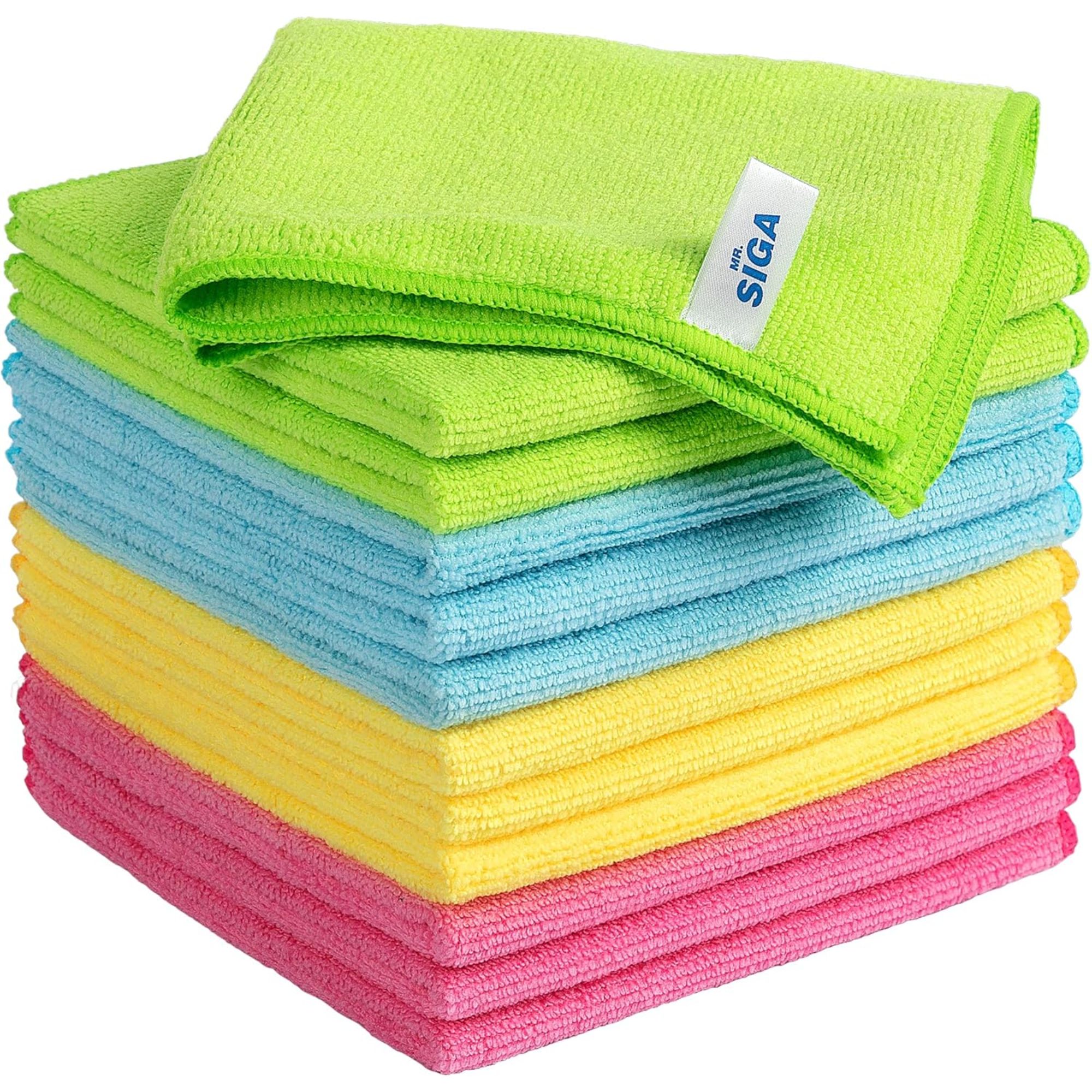
It's somewhat ironic that you need to learn how to clean a stainless steel sink to avoid it looking, well, stained.
Knowing how to do this properly is important for hygiene and to keep your sink area looking its best, free of limescale, grime, and hard water marks.
Luckily, cleaning stainless steel isn't difficult, and it doesn't have to be time-consuming, either. Here, professional cleaners share their step-by-step instructions to get your stainless steel sink sparkling.
How to clean a stainless steel sink like a pro
Step 1: Clear the sink and rinse

A kitchen cleaning checklist should always include cleaning the kitchen sink so it remains pristine.
Stainless steel’s name refers to the fact that it resists corrosion and the growth of bacteria and mold, but it can definitely become stained, and limescale can build up, too. As with any kitchen surface, you’ll want to keep it hygienic to avoid attracting any pests or cross-contamination during food prep.
Luckily, says Karina Toner, cleaning expert and operations manager at Spekless, 'Stainless steel sinks are easier to keep clean than most people think. They don’t need anything fancy, but they do deserve a little more than a quick rinse with hot water,' she explains.
So, to begin, remove everything from your sink, including dishes, utensils, sink stoppers and cleaning tools. 'Make sure the sink is completely empty so you can reach every corner, including around the faucet and drain,' adds Karina.
Likewise, any grit needs to be removed from the sink. Start cleaning with this in situ, and you run the risk of scratching the stainless steel surface. Make sure any scraps are cleared from the sink drain, too.
If you regularly include cleaning your stainless steel sink as part of your achievable cleaning routine and manage to stay on top of it, says Will Cotter from DeluxeMaid, yours won't need a deep clean all the time.
In this case, 'After you're done with the dishes, run hot water for a minute or two to melt down any grease,' he advises.
Step 2: Sprinkle baking soda generously

Next, advises Karina, harness the power of cleaning with baking soda. This is particularly important if you're wondering how to clean a stainless steel sink that is stained.
'Coat the entire sink with a layer of baking soda, focusing on any visibly grimy spots,' she says. We recommend the ARM & HAMMER Pure Baking Soda available at Walmart for this.
'Baking soda works as a gentle abrasive, lifting dirt and residue without damaging the finish,' adds Karina.
Step 3: Scrub with a damp sponge or cloth

Luckily, using budget-friendly dish soap is an effective way to get a stainless steel sink sparkling. You’ll need to use an anti-scratch sponge, such as the bestselling Great Value Non-Scratch Scrub Sponges available at Walmart.
'In my case, I use the Scotch-Brite Zero Scratch Scrub Sponges, also available at Walmart,' says cleaning expert Will. 'Sometimes I switch it up and use Scrub Daddy Power Paste, from Walmart, with the Scrub Daddy Scrub Mommy Sponges, available at Amazon.'
Apply the dish soap with a sponge to clean, mixing it with the baking soda, then rinse.
'Use a damp sponge or soft cloth in circular motions to scrub the surface,' says Karina. 'Apply a little extra pressure on stubborn spots and don’t forget to hit the rim and corners.'
Punteha van Terheyden, Head of Solved is disabled and has painful joints, including her wrists. She says, 'If you have weak wrists or struggle with applying pressure like me, I've found an electric scrubbing brush to be fantastic for cleaning the usual tea and coffee stains off my stainless steel sink.
'I've got the Hoto waterproof electric scrubber available from Amazon, and it's a total game-changer. Now I'm just waiting for the sink to get dirty so I can use it because it's so deeply satisfying to use.'
She uses dish soap and the scrubber to banish all stains from her stainless steel stink in under a minute.
As an alternative to dish soap, a general-purpose kitchen cleaner can do the job, but check that it is suitable for use on the material, or use a special stainless steel cleaner. We recommend the Cif Stainless Steel Specialist Cleaner Spray available at Amazon. Use any product according to instructions, which may include leaving it to work before using a cloth or sponge.
As one of the easiest kitchen sinks to maintain, your stainless steel sink is also one of the many things you can clean with The Pink Stuff, again, using a gentle and reusable cloth or sponge. This works effectively as The Pink Stuff Cleaning Paste, available at Target, contains sodium silicate, a chemical compound that helps to prevent hard-water stains from forming after cleaning, keeping water marks at bay for longer.
If you are concerned about potential damage, try testing The Pink Stuff on a small, inconspicuous area first to be safe.
Step 4: Tackle the drain and faucet

Next, says Karina, don't forget to clean the faucet head and clean the kitchen sink drain.
'Mix a small amount of baking soda with water to form a paste,' suggests Karina. 'Use an old toothbrush to scrub around the drain, faucet base, and any seams where gunk collects.'
If you don't have an old toothbrush at home, the Joseph Joseph CleanTech 3-in-1 Detail Cleaning Brush available at Amazon will work well for this too.
Step 5: Rinse thoroughly

Once you're satisfied with your cleaning and scrubbing efforts, it's time to rinse.
Karina advises, 'Rinse out all the baking soda and loosened grime with warm water. A handheld sprayer [such as the Equate Plastic Spray Bottle available at Walmart] or just a clean cup of water will help flush away residue from hard-to-reach areas.
Step 6: Dry and polish

Then, after you've rinsed, dry your stainless steel sink with paper towels, such as the Bounty Quick Size Paper Towels available at Amazon, says cleaning expert Will, 'so it doesn't end up with water spots.'
You can also use a Microfiber Cloth, available at Walmart.
'For extra shine, buff the surface with a drop of olive oil or a stainless steel polish until it gleams,' adds Karina, who recommends the Weiman Stainless Steel Cleaner & Polish Trigger Spray available at Walmart.
'This is my go-to for that final polish,' she explains. 'It makes the sink gleam and helps repel water spots for a bit longer.'
Alternative ways to clean a stainless steel sink
For a clean and shiny stainless steel sink, check out these pro tips from Jessica Samson, cleaning expert at The Maids:
- Club soda: Simply fill a spray bottle full of club soda and spray down the sink. Be sure to wipe dry with a microfiber cloth and always wipe in the direction of the grain of the sink.
- Vinegar and oil: Put some vinegar in a spray bottle. Spray down your sink. Use a microfiber cloth to wipe in the direction of the grain and clean the sink. Rinse well. When it is clean and streak-free, take the cloth and dip it in olive oil or baby oil. Wipe the sink down in the direction of the grain with the oil. This will add a protective shine to your sink and stainless steel.
- Dish soap and oil: Mix up a small amount of dish soap and warm water. Apply the solution to the sink with the spray bottle and wipe clean with a microfiber cloth. Always wipe in the direction of the grain and finish the sink off with some oil to add a protective shine to your sink. This will leave it sparkling clean.
What to shop
All prices were correct at the time of publication.

These glass spray bottles are ideal for mixing up your own cleaning solutions, with UV-protection to prevent ingredients degrading.

These super soft and absorbent microfiber cloths are perfect for leaving your stainless steel sink streak-free.

With a pH-neutral formula, this stainless steel cleaner leaves sinks free of dust, dirt, and smudges, and leaves a protective barrier against fingerprints.
FAQs
What is the best cleaner for stainless steel sinks?
Dish soap is a great cleaner for stainless steel sinks, and one you’ll already have to hand. If you prefer to use a specialist product, Sara San Angelo aka The Cleaning Lady says, ‘Bar Keeper’s Friend, available at Amazon is the best thing I've used to clean stainless steel sinks. It is non-abrasive and will not harm the finish. And your sink will shine like new!’
What will damage stainless steel sinks?
Steel wool, scrubbing brushes and abrasive sponges can all damage stainless steel sinks during cleaning.
For example, a brillo pad is a harsh scourer that should not be used. The tough metal fibers mean that it scratches surfaces easily, ruining the appearance of your sink and wearing down the protective patina that protects it from rust more quickly.
Avoid abrasive cleaners, too. Never use bleach or a cleaner with chlorine, either and don't use oven cleaner on a stainless steel sink, either. Make sure to work with the grain, too, rather than across it.
Will vinegar damage a stainless steel sink?
No, it won't damage it during cleaning. Vinegar is a good cleaner for removing water marks and soap scum from stainless steel sinks. Using distilled white vinegar, mixed with baking soda for tough cleaning, can be used to wipe down metal surfaces for a streak-free shine. Make sure to wipe away with water and buff dry afterward for the best result.
Meet our experts
You can also polish stainless steel appliances with olive oil for a streak-free, smudge-free finish.







